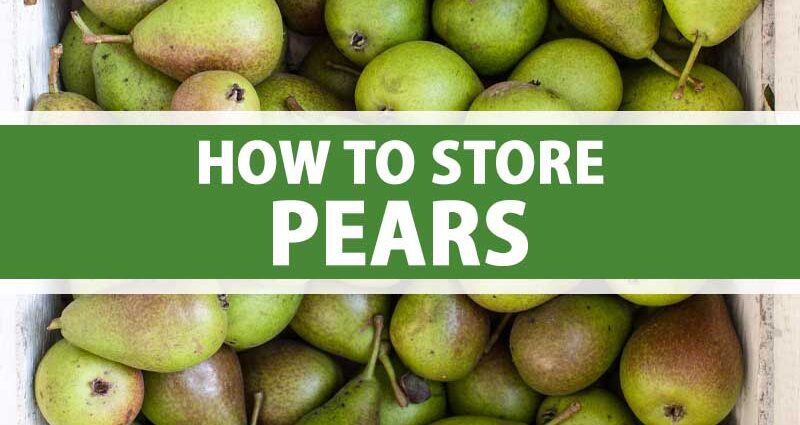Contents

How and where to store pears correctly? How and where to store pears
The shelf life of pears is influenced by many nuances – varieties, collection period, degree of maturity upon purchase, creation of the necessary conditions, storage features before entering the counter and many other nuances. Compared to other fruits, pears are more difficult to store. This fact is due to the peculiarity of the consistency of the pulp of this type of fruit. Unlike apples, for example, which darken when kept cut open, pears not only change color, but become slippery and watery. Due to improper storage, pears can turn into absolutely tasteless fruits within a short period of time.
The nuances of storing pears:
- to extend the shelf life, it is recommended to wrap pears in paper (this method will preserve the skin and prevent the rapid appearance of bacteria that cause the decay process);
- if there are a lot of pears, then they can be stored in a box (at the same time, pears are placed at a distance from each other, they are laid with paper, and laid out so that the tails are located diagonally);
- if pears are planned to be stored in plastic bags, then they must first be cooled, and air must be pumped out of the bags;
- you can sprinkle pears in the box with wood chips (this way you can extend the shelf life);
- during storage, pears are carefully inspected and sorted out (overripe or decaying fruits must be isolated);
- pears periodically need to be provided with a sufficient amount of oxygen (which is why the fruits are poorly stored in closed boxes or unventilated rooms);
- if pears are stored in boxes, then instead of a lid, a fabric that allows air to pass through should be used;
- pears in the refrigerator should not be stored in close proximity to vegetables (from vegetables, pears can get a sour taste and violate their traditional taste characteristics);
- if the air humidity is low, the pears will gradually shrink and lose their juice;
- pears will be better preserved if the stalk is preserved on them;
- under the influence of light or sunlight, the shelf life of pears will be significantly reduced;
- You can only store pears without damage or signs of overripe.
If you plan to store pears in the freezer, then they must first be washed, peeled and dried for a while with a paper towel. You can freeze them in containers or plastic bags. Wet pears must not be frozen. Otherwise, when defrosting, their consistency and taste will be drastically violated.
How much and at what temperature to store pears
The optimum storage temperature for pears is considered to be from 0 to +1 degrees. In this case, the air humidity should be within 80-90%. On average, pears can be stored for 6-7 months. However, varieties play a key role in this case.
Pears are traditionally divided into three categories based on shelf life.:
- winter varieties are stored for 3-8 months, depending on the degree of maturity;
- pears of medium ripening periods are stored from 1 to 3 months;
- early varieties retain freshness no longer than 20 days.
Cut pears should be stored in the refrigerator. After a day, the pulp will begin to gradually wind up, so the fruits must be eaten. If you know in advance that the chopped pears will not be used for several days, then you can freeze them. In the freezer, the taste of the fruit will not change for several months.
In the refrigerator in the fruit compartment, pears can be kept fresh for up to two months. During this time, the fruit must be monitored and the spoiled fruit must be removed. In addition, pears should be stored separately from food, fruits and vegetables.










